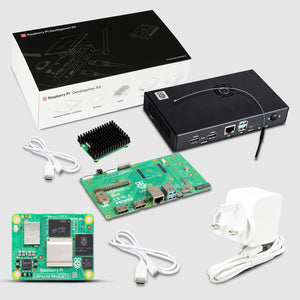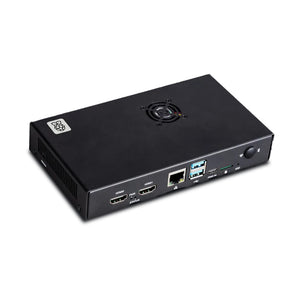Air Monitoring HAT has become a hit among the community of tech enthusiasts that want to shape this world into a better place. One can monitor particulate matter in the air with the utilization of the Air Monitoring HAT along with the integration of Raspberry Pi. Particulate matter has become one of the hazardous particles in the atmosphere that on average takes the lives of 4.5 million people around the world. A lot of the individuals do not understand the seriousness of the situation because of the lack of data on particulate matter in the air. In this blog, we will provide you a complete guide to run Air Monitoring HAT to make more people aware of the dangerous and harmful situations around them.
Features
Air Monitoring HAT has a powerful and hi-tech PMSA003 sensor that provides the information of suspended particulate matter(PM1.0, PM2.5, PM10) in the air per unit volume via digital output with an operating voltage of 3.3 V. We, SB Components, spent our resources on our research and development department to develop a powerful sensor HAT to monitor Particulate matter in the air. It enhances the knowledge of the individuals with accurate data of particulate matter (1.0, 2.5, 10) in the surrounding environment which will help users to develop advanced products to make the environment less polluted. It communicates via UART(serial) with the standby current ≤200 Microampere(μA) of the sensor. It is developed to be compatible with Raspberry Pi.
Specifications
- Model - Air Monitoring HAT
- Sensor Model number - PMSA003
- Data Output - Digital Sensor(unit quality + number of units)
- Type - Biosensor
- Communication Interface - UART (Serial)
- Display Type - OLED Display 0.91”
- Board Dimension - 65 x 56 mm
- Measuring range - 0.3 to 1.0, 1.0 to 2.5, 2.5 to 10 Micron (μm)
-
Counting efficiency - 50% @ 0.3 μm 98% @> = 0.5 um
Said quasi-volume - 0.1 litre (L) - Response time - ≤10 s
- DC supply voltage - 5.0 V
- Maximum Operating Current - 100 Milliamp (mA)
- Standby current - ≤200 Microamp (μA)
- Data interface level - L <0.8 @3.3, H >2.7@3.3 Volt(V)
- Operating Temperature range - -10 to +60 Celsius (℃)
- Operating Humidity range - 0 - 99%
- Meantime between failures - ≥3 Year(Y)
Applications
A lot of you must be thinking about the projects that can be made from the Air Monitoring HAT to save the environment with the help of technology. There are the following applications of Air Monitoring HAT or you can use your creativity to develop products and kindly mention in the comments about your development
- Track Bad Quality of Air
- Provide Data for Research
- Aware Users about the Risks in the Environment
- Compact, Economica, and Advanced
- Make Detailed Information about the particulate matter in the environment.
Pinout (Internally connected via header)

Software :
Enable I2C and Serial Interface
Open a terminal and run the following commands to enable I2C and Serial:
- sudo raspi-config
Choose Interfacing Options -> I2C ->yes
- sudo raspi-config
Choose Interfacing Options -> Serial -> No -> Yes
Testing
- Clone GITHUB Repository
git clone https://github.com/sbcshop/Air-Monitoring-HAT.git
cd Air-Monitoring-HAT
- Run GUI by running the below command:
python3 Air_monitoring_GUI.py
- Select COM port from above GUI ("/dev/ttyS0" in case of default connection), and click on the start button to start Real-Time data from the sensor.
You can also use these two examples and modify them easily :
1.) display_on_oled_example.py :- To print the sensor data on Oled Display.
2.) read_example.py : To print the sensor data on Python shell or Terminal.
For detailed information please visit the wiki of this repository.









1 comment
Andrew Gebhardt
I really find this device very useful. However I would like to run this for a period and find certain statistics, for example Max and Average for all the MP factors. Can that be done?
Alternatively is it possible to write the data to a text file?
Thanks.